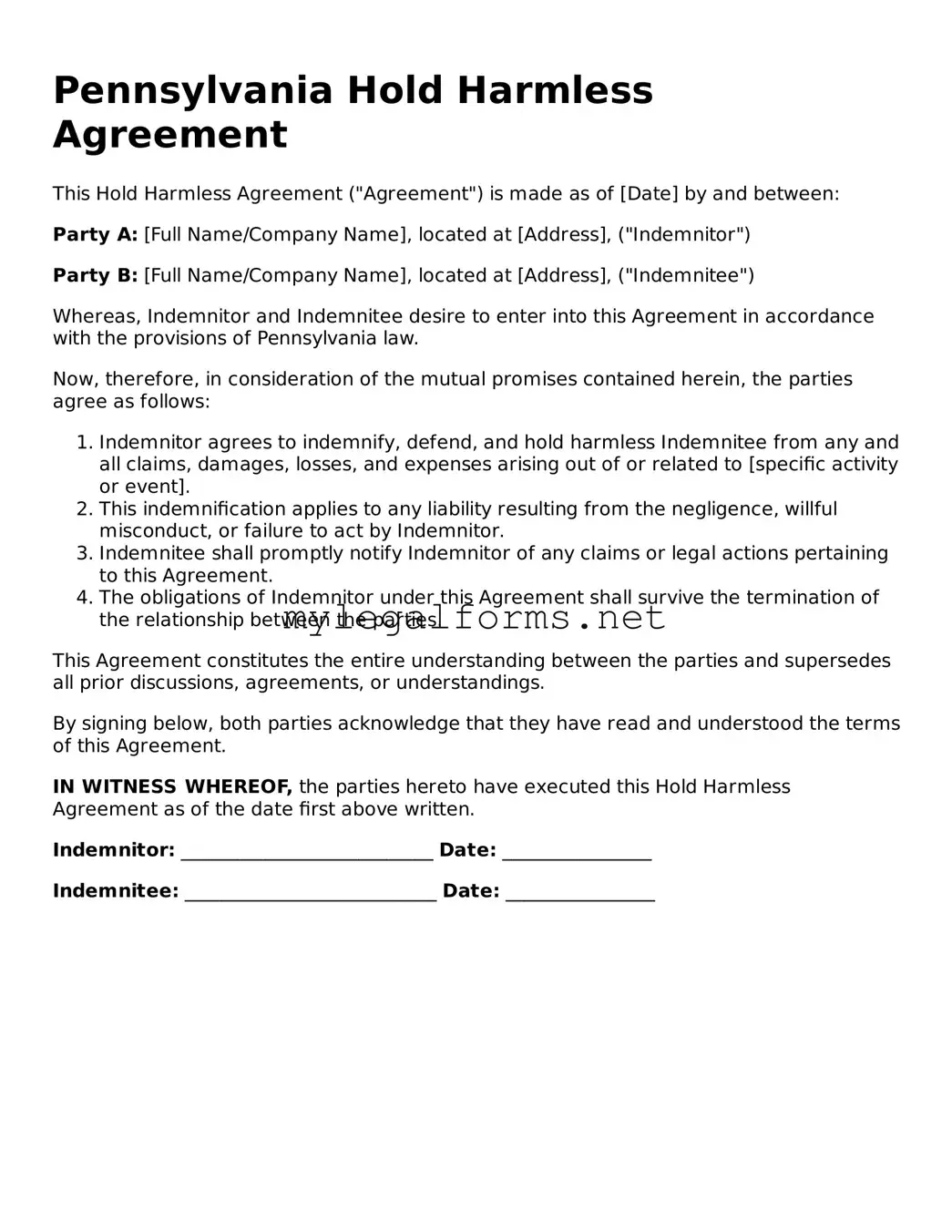Pennsylvania Hold Harmless Agreement
This Hold Harmless Agreement ("Agreement") is made as of [Date] by and between:
Party A: [Full Name/Company Name], located at [Address], ("Indemnitor")
Party B: [Full Name/Company Name], located at [Address], ("Indemnitee")
Whereas, Indemnitor and Indemnitee desire to enter into this Agreement in accordance with the provisions of Pennsylvania law.
Now, therefore, in consideration of the mutual promises contained herein, the parties agree as follows:
- Indemnitor agrees to indemnify, defend, and hold harmless Indemnitee from any and all claims, damages, losses, and expenses arising out of or related to [specific activity or event].
- This indemnification applies to any liability resulting from the negligence, willful misconduct, or failure to act by Indemnitor.
- Indemnitee shall promptly notify Indemnitor of any claims or legal actions pertaining to this Agreement.
- The obligations of Indemnitor under this Agreement shall survive the termination of the relationship between the parties.
This Agreement constitutes the entire understanding between the parties and supersedes all prior discussions, agreements, or understandings.
By signing below, both parties acknowledge that they have read and understood the terms of this Agreement.
IN WITNESS WHEREOF, the parties hereto have executed this Hold Harmless Agreement as of the date first above written.
Indemnitor: ___________________________ Date: ________________
Indemnitee: ___________________________ Date: ________________
